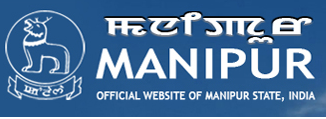BIO-MEDICAL WASTES
Imphal, the capital of Manipur is the main hub for secondary and tertiary health care providers in the State. The town is quite small having a maximum radius of 10 km. The town has 5 public hospitals & 17 private hospitals/nursing homes with a total sanctioned bed strength of 2484 and 2230 beds in position as of now as listed below:
| Sl.No. | Category of Institution | Number | Sanctioned bed Strength | Actual bed in position | General hospital beds |
| A. | Under the State Health Department | ||||
| 1. | State General Hospital | 1 | 500 | 376 | 376 |
| 2. | State TB Hospital | 1 | 100 | 100 | 0 |
| 3. | State Leprosy Hospital | 1 | 30 | 6 | 0 |
| Total: A | 4 | 630 | 482 | 376 | |
| B. | Under Ministry of Health GoI | ||||
| 1. | RIMS Hospital | 1 | 1074 | 1074 | 1074 |
| C. | Under Private Sector | ||||
| Regd. Hospital and Nursing Home | 17 | 780 | 780 | 780 | |
| Grand Total(A+B+C) | 21 | 2484 | 2336 | 2230 | |
Many of the hospitals are performing regular major surgeries. The hospitals & clinics & labs as expected generate a sizeable quantity of bio-medical wastes which poses potential threat to public health unless they are properly treated and disposed.
Hospital Waste:
Hospital waste refers to all waste generated, discarded and not intended for further use in the hospital.
Classification of hospital waste
(1) General waste: Largely composed of domestic or house hold type waste. It is non-hazardous to human beings, e.g. kitchen waste, packaging material, paper, wrappers, plastics.
(2) Pathological waste: Consists of tissue, organ, body part, human foetuses, blood and body fluid. It is hazardous waste.
(3) Infectious waste: The wastes which contain pathogens in sufficient concentration or quantity that could cause diseases. It is hazardous e.g. culture and stocks of infectious agents from laboratories, waste from surgery, waste originating from infectious patients.
(4) Sharps: Waste materials which could cause the person handling it, a cut or puncture of skin e.g. needles, broken glass, saws, nail, blades, scalpels.
(5) Pharmaceutical waste: This includes pharmaceutical products, drugs, and chemicals that have been returned from wards, have been spilled, are outdated, or contaminated.
(6) Chemical waste: This comprises discarded solid, liquid and gaseous chemicals e.g. cleaning, house keeping, and disinfecting product.
(7) Radioactive waste: It includes solid, liquid, and gaseous waste that is contaminated with radionucleides generated from in-vitro analysis of body tissues and fluid, in-vivo body organ imaging and tumour localization and therapeutic procedures.
Amount and composition of hospital kg/bed/day waste generated
(a) Amount: In India hospital waste of about 1.5 kg/bed/day is generated in contrast to about 4.5 kg/bed/day in the USA.
(b) Hazardous/non-hazardous
| Hazardous | 15% |
| a) Hazardous but non-infective | 5% |
| b) Hazardous and infective | 10% |
| Non-hazardous | 85% |
(c) Composition
| By weight | ||
| Plastic | 14% | |
| Combustible | ||
| Dry cellubiostic solid | 45% | |
| Wet cellubiostic solid | 18% | |
| Non-Combustible | 20% |
Biomedical waste
Any solid, fluid and liquid or liquid waste, including its container and any intermediate product, which is generated during the diagnosis, treatment or immunization of human being or animals, in research pertaining thereto, or in the production or testing of biological and the animal waste from slaughter houses or any other similar establishment.
All biomedical waste is hazardous. In hospital it comprises of 15% of total hospital waste. But when hazardous waste is not segregated at the source of generation and mixed with nonhazardous waste, then 100% waste becomes hazardous.
65% of the bio-medical waste (i.e. about 10% of hospital waste) is ideally incinerated and the remaining 35% (i.e. 5% of hospital waste) is to be disinfected before disposal either by autoclave or microwaving.
However, due to less optimum segregation of the bio-medical waste at source, the percentage of bio-medical waste goes generally to 30% of the total hospital waste. The mode of disposal to be done is as follows.
| Sl.No. | Category | Composition by weight | Mode of disposal | Remarks |
| 1. | General Waste | 70% | Disposed with Municipal Solid Waste | Tie up with Municipality |
| 2. | Recyclablebio-medical waste | 20% | Shredded and disinfected by autoclaving/microwaving | Recycled or buried |
| 3. | Incinerablebio-medical waste | 10% | Incinerated | Incinerated with twin-burner system |







